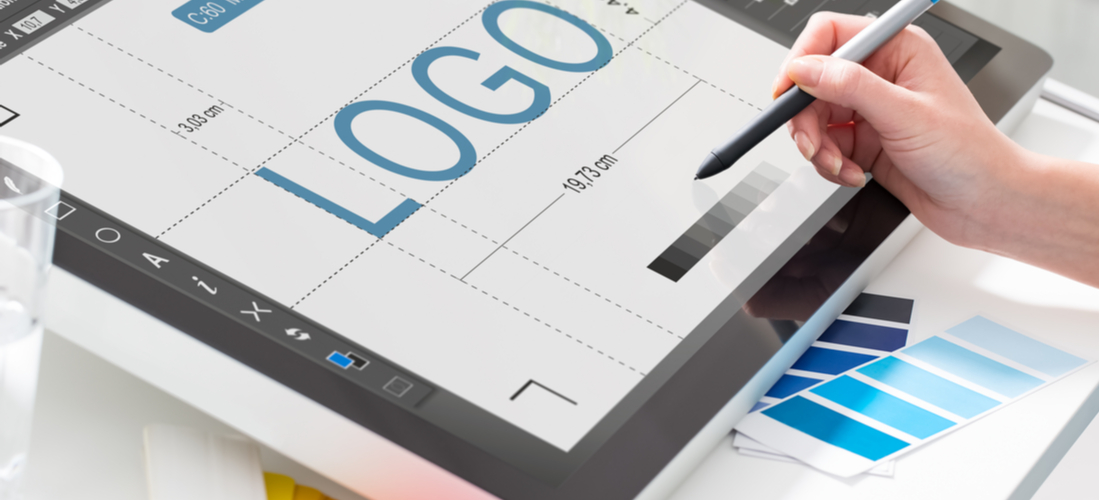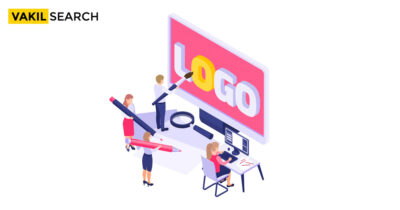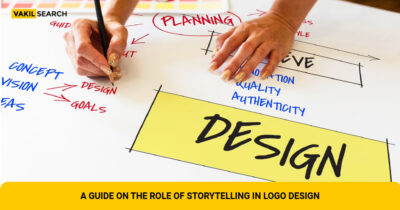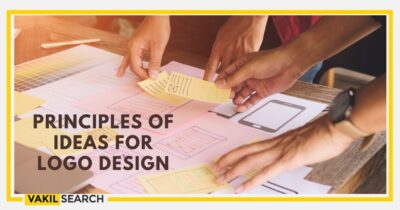Do you want to know how to create a Brand Logo Design? Before beginning a brand identity project, you should be aware of the following company logo information.
A Brand Logo Design is a word-based or image-based symbol that identifies a company. An excellent logo conveys what a firm does as well as the brand’s values.
The goal of logo design design of the company is to create a company’s ideal visual brand symbol. Depending on the kind, a logo typically consists of a symbol or brandmark, a logotype, and a phrase.
Brand Logo Design and It’s Importance
Let’s walk through the impact that logos have on their companies.
- In a world where people and businesses are recognised more for what they represent than for who they are, symbols have grown increasingly essential. Consequently, their use of them has become increasingly sophisticated.
- Some may argue that a Brand Logo Design is a symbol, but this is not the case. A logo serves as a representation of the company’s identity while also utilising pre-existing emblems.
- Symbols, when employed correctly, may be used to exploit the most unconscious level of human desire. Consequently, when included in the logo design, symbols gracefully generate linkages between a company and that which the firm wishes to symbolise.
Principles of Logo Design
Logo design necessitates not only skill and expertise but also knowledge. Certain aspects of the process come with much practice and working with various businesses with diverse messaging.
Creating a fresh logo design from scratch necessitates thinking about how to capture and represent the brand’s personality perfectly. And altering an old Brand Logo Design entails a slew of difficulties, such as deciding whether to entirely shift the brand’s direction or merely make minor changes.
-
Lay the Groundwork for Brand Logo Design
One of the most exciting aspects of being a designer is learning new skills with each job. Every client is unique, and people do their duties differently within the same profession. Some preliminary work should be done before beginning to develop a logo. Knowing the client and their product thoroughly will help you choose the best design.
Please make certain that you question your client about why they exist. What exactly do they do, and how exactly do they do it? What distinguishes them from other brands? Who are they there for, and what do they value the most? Some of these inquiries may appear needless, but they can be difficult to answer and will lead to more questions about your client’s company.
-
Make Use of a Sketchbook
With so many digital tools accessible nowadays, you may be tempted by logo design. Nevertheless, using a sketchpad allows you to rest your eyes from the glare of brightly illuminated pixels. And more significantly, they record creative ideas far more rapidly and freely. You have complete freedom to explore with no computer interface.
-
Start in Black and White
As previously stated, colour is a crucial aspect of branding but can also be a distraction. It is difficult for a client to examine the main concept of the logo. Leaving colour until later in the process allows you to concentrate on the concept of your logo design rather than an element that is usually much easier to adjust.
It’s hard to save a bad idea with an attractive color scheme, while a good idea will still be good regardless of colour. When you think of a well-known sign, you usually think of the form first, followed by the palette. The most crucial aspects are the lines, shapes, and concepts.
-
Maintain the Appropriateness of Your Brand Logo Design
A logo design must be appropriate for its symbolizes concepts, values, and activities. An attractive typeface will look better in a high-end restaurant than in a children’s nursery.
Similarly, a brilliant pink and yellow color scheme is unlikely to help your message connect with male retirees. And regardless of the sector, creating a mark that resembles a swastika isn’t going to succeed.
-
Make Your Brand Logo Design Simple to Remember
A good logo design is memorable. Assisting a company in keeping a potential buyer’s attention despite competition from other brands, how can that be accomplished? Simplicity is the keyword here. A basic logo may often be remembered after a brief glance, which is impossible with a highly detailed design.
-
Ensure that It Stands Out
If a brand’s competitors have used the same typographic style and colour palette, this is an excellent opportunity to differentiate your client rather than blend in. Trying something new can help your logo design stand out.
However, the fact that there is so much commonality in the marketplace does not necessarily imply that your job has become easier. Exhibiting your inventiveness in your design portfolio is one good strategy to attract the type of client you desire. Demonstrating the suitability of your concept will help dispel any reservations.
-
Think About the Overall Brand Identity
In terms of design, the wider picture includes every possible item on which your company logo design could appear. Always analyze how the identity operates in the absence of the Brand Logo Design.
While crucial, a sign can only take an identity so far. Creating a custom typeface for your brand is one way to produce consistent aesthetics. That typeface can then be utilised in marketing headlines as well.
-
Avoid being Overly Literal
A logo does not have to depict what a firm does; it is generally preferable if it does not. More abstract marks are frequently more durable. Historically, you’d exhibit your factory or perhaps a heraldic crest if it was a family-run business, but symbols don’t tell the story of what you do.
Instead, they make it abundantly plain who you are. When associations can be created between what the firm does and the shape and colour of its mark, the meaning of the mark in the eyes of the public is added later.
-
Keep in Mind that Symbols Aren’t Required.
A symbol isn’t necessarily required for a logo. A custom wordmark can often work well, especially when the firm name is unique—like Google, Mobil, or Pirelli. Don’t be tempted to go overboard with the design because the emphasis is on the lettering.
Legibility is essential for any wordmark, and your presentations should show how your ideas operate in all sizes, large and tiny. Of course, words may not always work in extremely small applications. Thus, adjustments may be required.
-
Make People Happy
Finally, incorporating a little wit into your logo design not only makes your job more enjoyable but may also help your client become more successful. It is not suitable for every brand or sector.
However, organisations in the less contentious legal and financial areas are distinguished by their stuffy and antiseptic branding. Adding a sense of humour to such customers’ identities might help them stand out.
Designing a Brand Logo Design
In this section, we will walk through the phases of designing a logo.
So you’ve created a logo, but how do you put it to use? A logo design does not exist in a vacuum. After you’ve developed your design, the final step is to incorporate it into a larger branding scheme.
Take a Second Opinion on Designing a Logo
Don’t underestimate the value of a second (or third) set of eyes to spot design flaws. Noticing possible cultural misunderstandings, ugly forms of unintentional innuendo, words, and meanings.
After you’ve created your logo design concept, always have it reviewed by others. On the walls, pinning work-in-progress allows for continual peer assessment. It’s simpler to notice anything on paper than on a screen. If you’re a solo freelancer, find some trusted peers to review your work—and reciprocate. Remember to inspect it from all angles and on various supports.
- Expand the brand universe
A logo design should be developed alongside other activation points as part of a larger “brand universe”. Coherence between elements is preferable to consistency.
- Make your logo design come alive.
In today’s branding industry, a static logo in the corner of a finished design is typically insufficient. To explore the potential of your logo design in motion, you may need to collaborate with animation or motion graphics specialists.
- Assist your client in launching their brand
Giving your finished logo design to a brand and letting them use it as they see fit can backfire. You should provide the client with a style guide explaining how to use your logo design properly.
This should include colour selections, logo design minimum and maximum sizes, placement rules, spacing (including exclusion zones from other design elements), and any clear no-nos like stretching or distorting.
- Accept public logo design critiques.
In the age of social media, everyone has an opinion on every company’s logo design. Criticism is no longer an infrequent irritation or something only specialists can offer. Anyone working on a high-profile rebranding project should be prepared for it.
Do you know the Process to Brand Logo How to make perfect brand design on your computer? You Can get the Expert Advice from Vakilsearch.
Conclusion
And, of course, a logo designer must remember that the audience’s initial reaction is not necessarily a reliable indicator of the long-term viability of a logo. Keep a thick skin: consider just the most valuable feedback, and let the rest wash over you.
Read more:-









